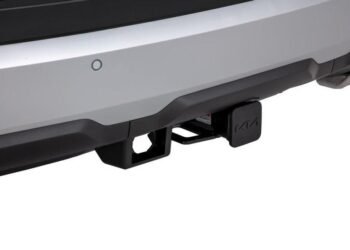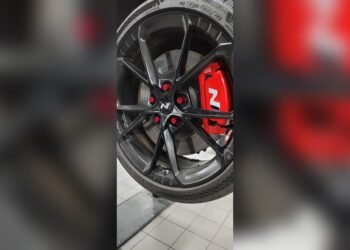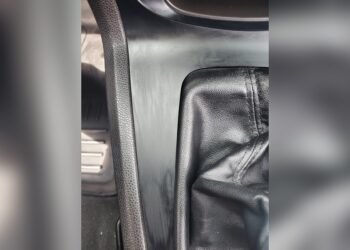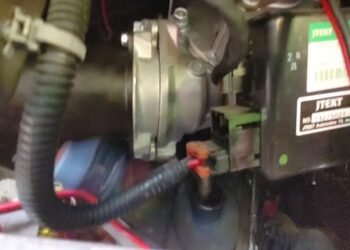Have you ever worried about those sudden chips or cracks that can ruin your windshield? You’re not alone.
Protecting your windshield is just as important as caring for your car’s paint. But did you know that using regular paint protection film (PPF) on your windshield could actually harm your visibility and safety? If you want to keep your windshield clear, strong, and damage-free, you need the right kind of protection—specifically designed for glass.
You’ll discover why windshield protection film is the smart choice, how it works, and what you should look for to keep your drive safe and stress-free. Keep reading to find out how to protect your windshield the right way.

Credit: www.clearpro.com
Windshield-specific Protection Film
Windshield-specific protection film offers a vital shield for your vehicle’s front glass. Unlike standard paint protection film (PPF), this film is created to protect windshields without affecting visibility or durability. It guards against chips, cracks, and damage from road debris. Using the right film ensures your windshield stays clear and strong, improving safety and maintaining the car’s appearance.
Differences From Standard Ppf
Standard PPF is designed for painted surfaces, not glass. It tends to be thicker and less clear. This can cause blurry or hazy views through the windshield. Regular PPF may peel or crack due to the glass’s rigid curves. It also wears out quickly from windshield wiper friction. Windshield-specific film is thinner and clearer. It sticks well to glass and resists scratches. This film keeps your view sharp and clean while protecting the glass.
Why Glass Requires Special Film
Glass has different properties than paint. It is smooth, hard, and curved in unique ways. This requires a film that can bend and stick firmly without bubbles. Glass also needs high optical clarity to avoid vision problems. Windshield-specific film uses special adhesives and materials for this. It also resists heat and UV rays better than standard PPF. This keeps the film clear and the glass safe over time. Proper protection helps avoid costly windshield repairs or replacements.

Credit: www.getexoshield.com
Problems With Standard Ppf On Windshields
Standard Paint Protection Film (PPF) is commonly used to protect car paint. Yet, applying it on windshields brings several problems. These issues affect safety, appearance, and the film’s lifespan. Understanding these problems helps in choosing the right protection for your windshield.
Visibility Issues
Standard PPF can create a hazy or blurry effect on the windshield. It may cause light distortion, making it hard to see clearly. This is dangerous while driving, especially at night or in bad weather. The film’s thickness and texture reduce optical clarity. Drivers may experience eye strain or distractions due to poor visibility.
Adhesion Challenges
Standard PPF is designed for car paint, which is smooth and flexible. Windshields have a curved and rigid surface. This difference makes the film hard to stick properly. The edges of the film may lift or peel off over time. Poor adhesion leads to bubbles and wrinkles, spoiling the look and protection. It can also trap dirt and moisture, causing further damage.
Durability Concerns
Windshields face constant friction from wipers and debris. Standard PPF is not made for such wear and tear. It scratches easily and loses its protective properties quickly. The film may crack or degrade under sunlight and temperature changes. This short lifespan means frequent replacements, increasing costs and hassle.
Benefits Of Windshield Protection Film
Windshield protection film offers several clear advantages for vehicle owners. It helps keep the glass safe from damage caused by road debris and harsh weather. The film preserves the windshield’s integrity and appearance over time. Drivers enjoy a safer, clearer view while spending less on repairs.
This specially designed film fits perfectly on glass, unlike regular paint protection film. It enhances durability without reducing visibility. The benefits go beyond just protection, making it a smart addition to any vehicle.
Impact Resistance
The film absorbs impacts from small stones and debris on the road. It prevents chips and cracks that can weaken the windshield. This protection reduces the risk of sudden windshield failure while driving. It acts as a shield, extending the glass’s lifespan and safety.
Optical Clarity
Windshield protection film is very clear and thin. It maintains an unobstructed view of the road. Unlike standard paint protection films, it does not cause blurriness or distortion. Drivers can trust their vision remains sharp and safe.
Proper Adhesion To Glass
The film is made to stick firmly to glass surfaces. It does not peel, bubble, or crack over time. This strong adhesion ensures long-lasting protection without damage to the windshield. It fits the curved shape of windshields perfectly.
Cost-effectiveness For Expensive Windshields
Replacing modern windshields can be very costly, especially on electric vehicles. The protection film reduces the chance of damage that leads to expensive repairs. It saves money by extending the windshield’s life. A small upfront cost can prevent large future expenses.
Installation Tips
Applying Paint Protection Film (PPF) on your windshield requires care and precision. Proper installation ensures the film works effectively and lasts longer. Follow these tips to get the best results from your windshield protection film.
Importance Of Professional Application
Experts have the right tools and experience for PPF installation. They avoid bubbles, wrinkles, and misalignment. Professional installation guarantees a smooth, clear finish. It reduces the risk of damage to your windshield. A trained installer ensures the film fits perfectly on curved glass. DIY attempts often lead to peeling or poor adhesion. Trusting a professional saves time and prevents costly mistakes.
Longevity And Maintenance
Proper care extends the life of your windshield PPF. Clean the film regularly with a soft cloth and mild soap. Avoid harsh chemicals that can degrade the film. Do not use abrasive materials or scrub too hard. Replace windshield wiper blades often to prevent scratches. Avoid parking under direct sunlight for long periods. Regular inspections help spot any lifting or damage early. Address small issues quickly to maintain full protection.
Choosing Quality Films
Not all PPFs work well on windshields. Select films designed specifically for glass surfaces. High-quality films offer better clarity and impact resistance. Look for films with UV protection to prevent yellowing. Thinner films reduce glare and distortion. Choose trusted brands with positive reviews. Cheap films may peel or cloud quickly. Investing in quality ensures safety and durability for your windshield.
Comparing Paint And Windshield Protection Films
Protection films safeguard your vehicle from damage. Paint Protection Film (PPF) and windshield protection film serve different purposes. Comparing these films helps you choose the right one. Both protect surfaces but vary in material and function.
Material Differences
PPF is made from thick polyurethane designed for painted surfaces. It is flexible and self-healing to hide minor scratches. Windshield protection film is thinner and clearer. It uses special adhesives for glass surfaces. This film resists yellowing and maintains transparency. The materials suit their surfaces to ensure proper adhesion and durability.
Performance Under Stress
PPF absorbs impacts on painted surfaces well, but struggles on glass. It may crack or peel due to windshield curvature. Windshield protection film handles impacts from stones and debris without damage. It resists abrasion from wipers and weather. This film stays clear, avoiding blurriness or distortion. Both films protect, but windshield film performs better under driving stress.
Real-world Effectiveness
Understanding how well paint protection film (PPF) works on windshields in real life is important. Tests and user feedback help reveal its true value. This section covers how PPF performs against rock impacts and what real users say about it.
Rock Impact Resistance Tests
Experts test windshield PPF by simulating rock hits at high speeds. The film absorbs much of the force, reducing chips and cracks. Clear, glass-specific PPF often holds up better than standard paint films. These tests show it can protect windshields effectively on highways and rough roads. The film stays intact and prevents damage that would normally need expensive repairs.
User Experiences And Reviews
Many drivers report fewer windshield chips after installing PPF. They notice less need for repairs or replacements. Users say the film stays clear and does not blur their view. Some mention that professional installation is key for best results. Overall, feedback highlights the film’s ability to protect without affecting driving safety. These real stories prove PPF’s value beyond lab tests.

Credit: www.amazon.com
Frequently Asked Questions
Can You Put Ppf On A Windshield?
You should not use regular PPF on windshields. Use windshield-specific protection film for clear, durable chip resistance. Professional installation ensures proper fit and safety.
Is Windscreen Ppf Worth It?
Windscreen PPF protects against chips and cracks, maintains clear visibility, and saves costly windshield repairs. Use windshield-specific film for best results.
Can You Put A Protective Film On A Windshield?
Yes, you can apply a protective film on a windshield. Use a windshield-specific film for clear visibility and impact resistance. Avoid standard paint protection film, as it can cause distortion and peel off. Professional installation ensures proper adhesion and durability, protecting your glass from chips and cracks effectively.
How Long Does Windshield Ppf Last?
Windshield PPF typically lasts 5 to 7 years, depending on film quality and environmental conditions. Professional installation extends its lifespan.
What Is Ppf On Windshield Protection Film?
PPF on windshield is a special film that protects glass from chips and cracks.
Conclusion
Using the right windshield protection film keeps your glass clear and safe. It prevents chips and cracks caused by road debris. Clear visibility stays intact, making your drive safer. Professional installation helps the film last longer and fit properly. Choose quality films designed for windshields, not regular paint protection film.
Protecting your windshield this way saves money on costly repairs. Simple, effective, and practical for everyday driving.

















